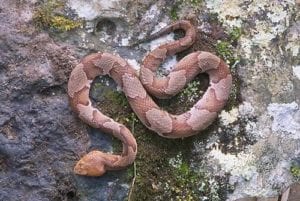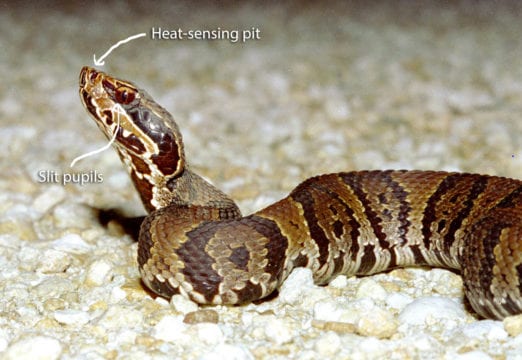Wait, is that Snake Venomous? Three Ways to Identify a Venomous Snake
One of the most common questions visitors ask the interpretive rangers at The Parklands is whether we have venomous snakes in the park. The simple answer is yes, like all other regions in Kentucky, there is the possibility that venomous snakes live in The Parklands. While the employees of the park have never spotted a venomous snake in the park, it is always good to be able to spot the difference between a venomous and nonvenomous snake!
First off, why are snakes called venomous and not poisonous? Animals that are venomous will inject the venom into you through a bite or sting. Poisonous animals, on the other hand, rely on you touching their skin to transfer the poison. So, there is no such thing as a poisonous snake, only a venomous one!
If you see a snake in the wild, whether on a trail or in the creek, keep your distance while you try to identify if it is venomous. Do not attempt to cross, touch, or pick up the snake until you’ve checked for these characteristics:
1) Venomous snakes have triangular shaped heads. Nonvenomous snakes have rounded heads. When they feel threatened, some nonvenomous snakes flatten their head to mimic a venomous snake. This is a sign of stress in the snake and, though they do not have venom, their bite can still be painful. Either way, if you see a triangular shaped head, keep your distance and walk away.


2) Venomous snakes also have a pit near their nose that senses the heat of potential prey. Nonvenomous snakes only have two small holes for their nose.

3) Venomous snakes have pupils that looks like slits. Nonvenomous snakes have rounded eyes with rounded pupils.

It is always good to be aware of these characteristics, especially if you encounter a snake while walking, hiking, or paddling. If you are interested in brushing up on your snake identification skills, take this test to see if you can identify the differences between a cottonmouth and other common Kentucky snakes! Happy World Snake Day!
